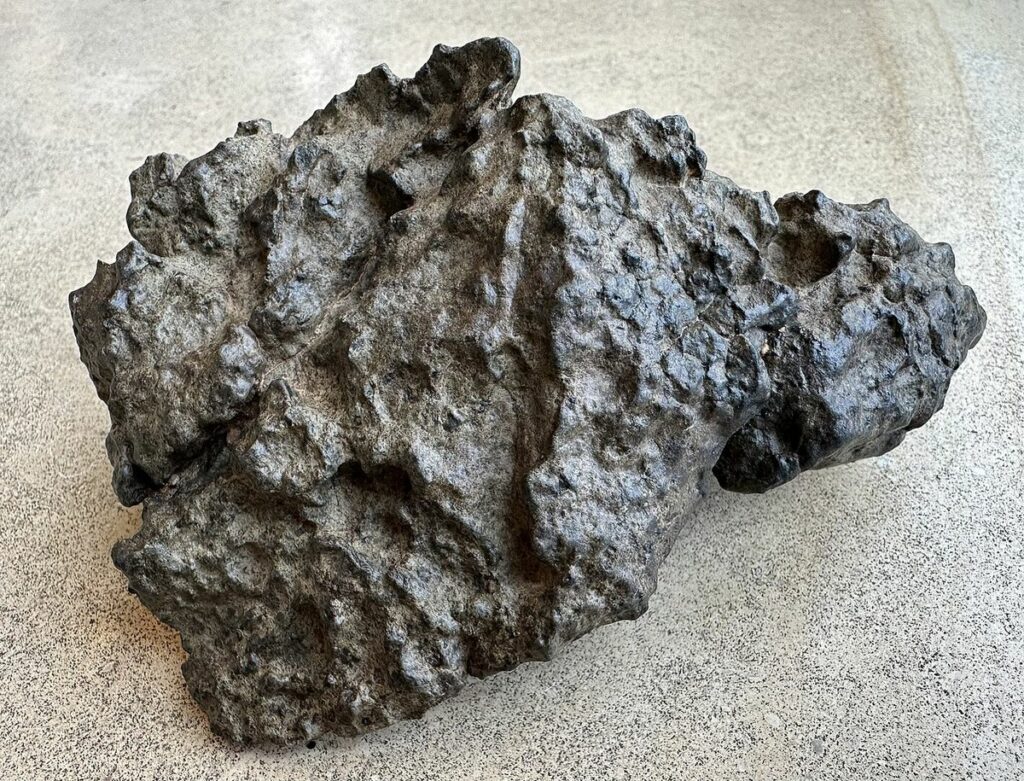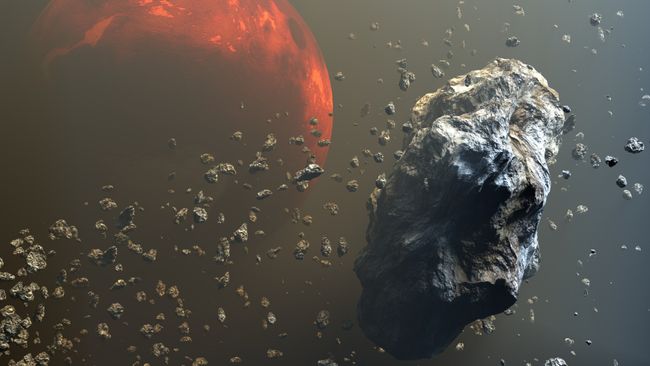200 Earth Meteorites Linked to 5 Martian Craters
Astronomers have traced the origins of 200 meteorites to five impact craters in two volcanic regions on Mars, known as Tharsis and Elysium.
Contrary to what you might imagine, parts of Mars has landed on Earth from time to time after it is blasted off the Red Planet by powerful explosions.
More than 10 of such events have been observed in the geological history of Mars in recent geologic times. During these great impacts, debris can be thrown away from Mars with sufficient velocity to allow it to escape from Mars’ gravitational field: it will go into orbit around the sun and end up on the Earth.
From the 200 meteorites, University of Alberta scientists recent studies have shown that the meteorites originated from five impact craters located in two regions on Mars; Tharsis and Elysium. “Now, we can arrange these meteorites on the basis of their history and know their Martian provenance before they came to this Earth,” Chris Herd, curator of the university meteorite collection and professor in the faculty of science, said in the statement.
Meteorites are always arriving to the Earth – according to NASA data, about 48. Daily our planet receives 5 tons (44,000 kilograms) of meteorite material however most of all reach Earth as nearly particle dust. Their source is, therefore, hard to pinpoint, although in the early 1980s, researchers began to suspect that a group of volcanogenic meteorites that are about 1 billion years old was not what they seemed to be. 3 billion years.
This indicated that the rocks originated from a celestial body which had relatively young and active volcanism and hence Mars. Nasa’s Viking landers were used to confirm this when it compared the composition of Mars’ atmopher with the gases entrenched in these rocks.
Identifying the exact source on Mars, however, used to be hard. According to the team it agreed that faced this challenge while using a technique called spectral matching which entails identifying and comparing the composition of the materials based on the patterns of the light that they reflect or emit.
However, this method is restricted by the variability of the terrain, and abundant dust layer, which affects the spectral signals, as it occurs in the Tharsis and Elysium regions of mars. If researchers had a more accurate idea of where exactly these Martian meteorites are from it would considerably enhance knowledge of Mars geology.
“It would enable Mars’ timeline to be revised in order to explain when, for how long, and in what manner key events have occurred in Martian history,” added Herd. “I call that the missing link – it’s the ability to say that, for example, the conditions under which this meteorite was ejected are due to an impact that formed craters of 10-30 kilometers in diameter. ”

The team as wants to analyze impacts on a Mars-like planet; the team employed high-resolution simulations for this purpose. Herd explained that ‘One of the major improvements here is our capacity to model the ejection process and calculate the potential size, or perhaps the range of sizes, of the crater that could possibly have ejected that specific kind of meteorites, or even that particular meteorite. ’
These simulations gave information on the ‘‘peak shock pressures’’ of the impact events as well as the time span the rocks were in contact with these pressures. These pressures can be established by looking at shock features as well as phases, coherence of minerals and minerals produced by sintering, presence of impactite glasses and certain arrangement of fractures.
Based on this knowledge, Herd and his colleagues calculated the size of the impact craters capable of firing the meteorites in addition to the depth to which the rocks were buried prior to the impact. These depth estimates involve a degree of uncertainty, but these were then cross-checked with the local geology of potential source craters the age and characteristics of the meteorites.
”This form of modeling helps to filter all possible craters down to approximately 15, and then using specific meteorite properties filter this even further,” he explained. It therefore opens a way to reconstruction of the volcanic stratigraphy[the geological record] and the position of these rocks before they were expelled from the surface.
It might help to understand the chronology of volcanic activities in Mars, varying sources of Martian magmas, and the rates of craters in the Amazonian stage, approx 3 billion years ago when impacts were comparatively lesser.
Still, using polymers to make our lives better was a breathtaking leap forward, Herd said: This is as close as one can get to going to Mars and pick a rock for yourself.
Do not forget to share your opinion with us to provide you with the best posts !




0 Comments